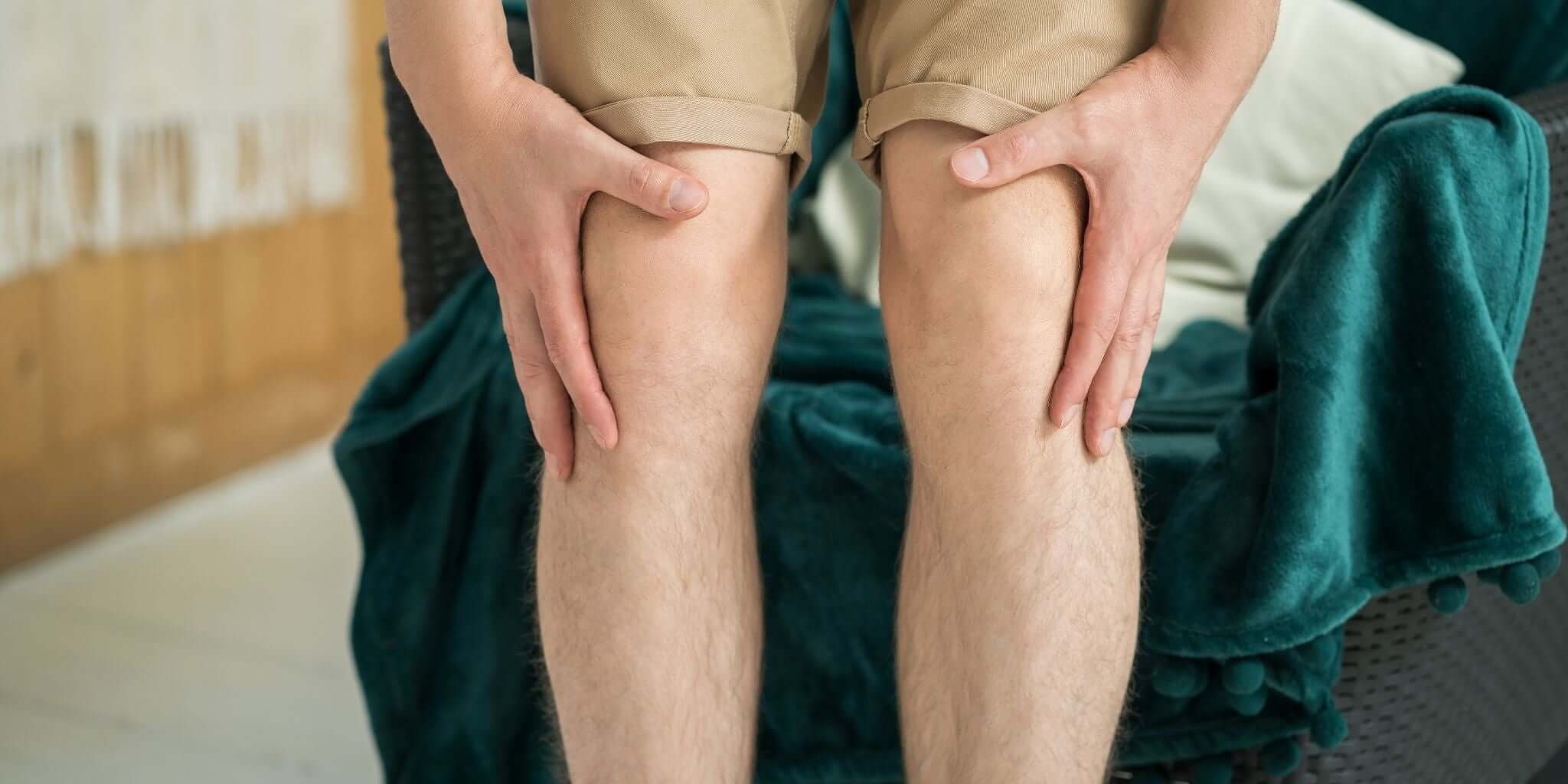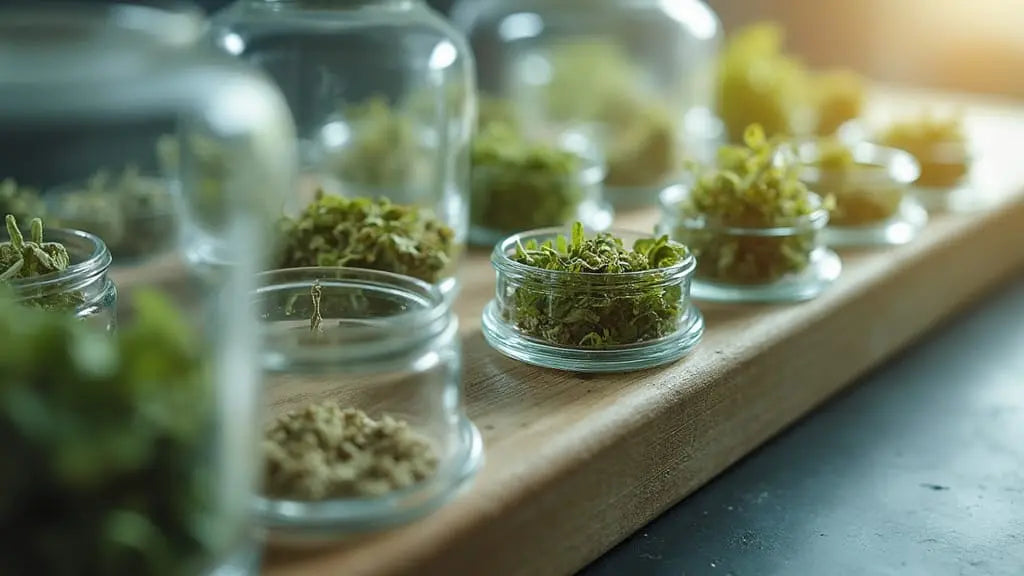了解不安腿综合症 (RLS)
不安腿综合征 (RLS)是一种常见的神经系统疾病,会导致患者产生无法抗拒的腿部移动冲动,并经常伴有刺痛、瘙痒或拉扯等不适感。这些症状通常在夜间加重,影响睡眠,使患者感到疲劳和沮丧。
虽然有医学治疗方法,但许多人还是求助于自然疗法来获得整体缓解。草药是一种温和有效的方法,可以缓解不安腿综合征、改善血液循环并促进更好的睡眠。在本文中,我们将探讨治疗不安腿综合征的最佳草药以及如何将它们纳入您的健康常规。
治疗不安腿综合征的草药疗法背后的历史和科学

几个世纪以来,草药一直被用来治疗各种疾病,包括类似于不安腿综合征 (RLS) 的疾病。探索这些传统疗法的根源,有助于我们深入了解草药在当今如何提供缓解。
古老智慧:历代草药疗法
-
传统中医(TCM) :
- 在中医中, 银杏等草药被用来促进血液循环,被认为可以缓解腿部不适并促进身体平衡。
- 阿育吠陀:
- 欧洲民间医学:
现代科学证实了古代做法
虽然这些传统用法是基于观察和经验的,但现代科学对草药的作用原理有了更深入的了解:
-
缬草根:
- 研究表明,缬草含有与大脑中的 GABA 受体相互作用的化合物,可促进放松并减少肌肉痉挛。
-
银杏:
- 临床研究表明,银杏可以增强血液流动和氧气输送,减轻因血液循环不良引起的不适。
-
薰衣草:
- 研究表明,薰衣草能够通过其镇静的香气和化学特性减轻焦虑并改善睡眠质量。
现代问题的自然解决方案
如今,随着越来越多的人出现睡眠障碍和压力相关疾病,草药疗法正在重新流行起来。草药疗法是一种安全、天然的药物治疗替代品,而且副作用通常较少。
通过将古老的实践与现代研究相结合,我们可以看到这些久经考验的草药在应对 RLS 挑战方面仍然具有重要意义。无论您是被它们的历史意义所启发,还是被它们的科学益处所吸引,将草药纳入您的日常生活中都可以成为一种变革性的体验。
什么是不安腿综合症?
RLS 的定义
不安腿综合症,又称 Willis-Ekbom 病,是一种神经系统疾病,其特征是:
- 一种无法控制的想要移动双腿的冲动。
- 令人不快的感觉,例如爬行、刺痛或灼烧。
- 症状在休息或不活动期间会恶化,尤其是在夜间。
原因和诱因
虽然 RLS 的具体病因尚不清楚,但促成因素包括:
- 营养缺乏:铁、镁或叶酸含量低。
- 慢性病:糖尿病、肾病或神经疾病。
- 生活方式诱因:压力、缺乏锻炼和不良的睡眠习惯。
对日常生活的影响
- 睡眠中断:难以入睡或保持睡眠,导致疲劳。
- 情绪压力:持续症状导致的焦虑和沮丧。
- 生产力下降:疲劳影响工作表现和日常活动。
草药如何帮助治疗 RLS

几个世纪以来,人们一直使用草药来缓解肌肉紧张、改善血液循环和促进放松,这是治疗 RLS 的关键要素。草药的作用原理如下:
放松肌肉
促进更好的睡眠
改善血液循环
- 银杏和七叶树等草药可以促进血液流动,缓解因血液循环不良引起的不适。
减轻压力和焦虑
草药治疗不安腿综合征的益处
1.天然肌肉松弛剂
缬草和黄芩等草药可以缓解肌肉紧张,有助于镇静不自主的腿部运动。
2.减轻压力
圣罗勒等适应原草药可以镇静神经系统,减少 RLS 症状的频率和强度。
3. 循环支持
银杏和辣椒可以改善血液流动,缓解血液循环不良引起的不适。
4.促进睡眠
薰衣草和西番莲等令人放松的草药有助于促进安稳的睡眠,减轻与 RLS 相关的疲劳。
治疗不安腿综合征的最佳草药及其使用方法

缬草根
- 好处:放松肌肉,镇静神经系统,促进更好的睡眠。
- 使用方法:睡前 30 分钟泡茶或作为酊剂服用。
洋甘菊
- 好处:缓解炎症、减轻肌肉紧张、促进放松。
- 使用方法:作为睡前茶享用或添加到舒缓沐浴中。
薰衣草
- 好处:减轻压力,镇静神经系统,改善睡眠质量。
- 使用方法:用作芳香疗法、茶或沐浴浸泡。
西番莲
- 好处:有助于放松并有助于缓解睡眠障碍。
- 使用方法:睡前服用酊剂或泡茶。
银杏
- 好处:增强血液循环,减轻腿部不适。
- 使用方法:作为补充剂服用或每天泡茶。
南非醉茄
- 好处:减轻压力并增强身体适应 RLS 触发因素的能力。
- 使用方法:每天泡茶或以胶囊形式服用。
缓解 RLS 的 DIY 食谱

1. 镇静缬草和甘菊茶
原料:
指示:
- 将草药放入茶壶中混合。
- 加入沸水,浸泡10分钟。
- 睡前 30 分钟滤水并小酌,可放松肌肉并改善睡眠。
2. 促进血液循环的草本油

原料:
- 1/4杯橄榄油
- 1茶匙干银杏
- 1茶匙干辣椒
指示:
- 轻轻加热橄榄油并添加香草。
- 让混合物浸泡一小时,然后过滤。
- 用油按摩腿上以促进血液循环并减轻不适。
3. 薰衣草舒缓沐浴露

原料:
- 2 汤匙 干薰衣草花
- 1/4 杯泻盐
指示:
- 将薰衣草和泻盐混合在一个碗里。
- 将混合物加入温水中。
- 浸泡20分钟可以放松肌肉、镇静神经系统。
4. 缓解压力的西番莲酊剂

原料:
- 1 杯干西番莲
- 2 杯高浓度酒(例如伏特加)
指示:
- 将西番莲放入玻璃罐中,并用酒精覆盖。
- 密封并存放在阴凉黑暗的地方,偶尔摇晃,可保存 4-6 周。
- 过滤后存放在滴管瓶中。睡前服用 1-2 滴管可减轻压力并促进睡眠。
自然治疗 RLS 的秘诀
-
保持活跃:
- 瑜伽或散步等轻柔的运动可以改善血液循环并减轻症状。
-
建立睡前常规:
- 将草药疗法与冥想或阅读等放松活动结合起来。
-
避免触发因素:
- 减少咖啡因和酒精的摄入量,因为它们会使 RLS 症状恶化。
-
保持规律的作息时间:
- 每天在同一时间睡觉和起床可以维持身体的自然节律。
利用草药的功效自然缓解 RLS

不安腿综合征会扰乱您的生活,但缬草、薰衣草和银杏等天然疗法可以有效缓解。通过将这些草药纳入您的日常生活,您可以减轻症状、改善睡眠并重获活力。





